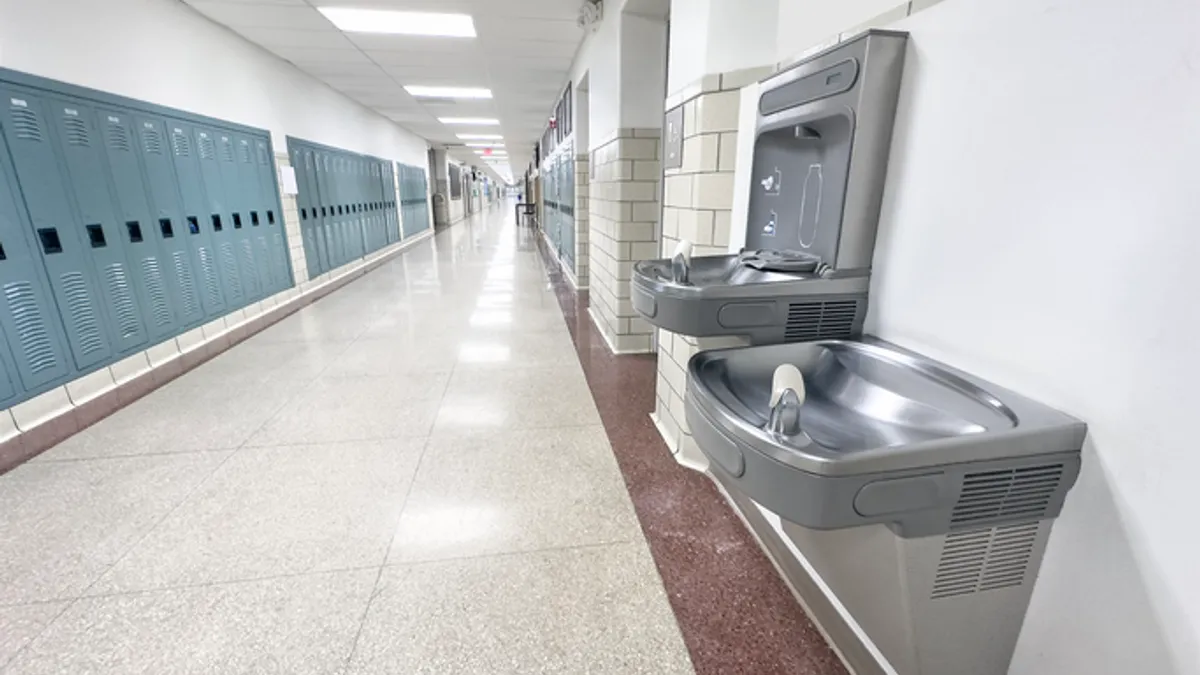Correction: A previous version of this story misstated who must replace the lead pipes. Drinking water systems across the country must replace the lead pipes under EPA's final rule. The story has been updated.
Lead pipes that cause harmful toxins to seep into drinking water in schools and homes must be replaced within 10 years, according to a final rule issued by the U.S. Environmental Protection Agency on Tuesday.
The rule is estimated to cost between $1.5 billion to $2 billion annually, although EPA said the benefits of requiring drinking water systems to replace lead service lines outweigh the costs.
For each year the rule is implemented, EPA estimates lead pipe replacements will protect up to 900,000 infants from having low birthweight, prevent attention-deficit/hyperactivity disorder in up to 2,600 children, and support the healthy cognitive development of children.
Lead exposure can be harmful to people of any age, but young children who ingest lead are at risk of developmental delays and disabilities including longer-term impacts that can adversely affect learning, speech and hearing development, attention and behavior. The Centers for Disease Control and Prevention says there are no safe lead levels in young children’s blood.
The rule also reduces the threshold for detectable lead and when communities need to take action and inform the public. Lead in water is difficult to see, smell and taste, according to the CDC.
"This regulation strikes an appropriate balance between ensuring schools can be tested at no-cost for lead contamination while leaving it to state policymakers to determine what remediation efforts, if any, are necessary and appropriate,” said Sasha Pudelski, director of advocacy for AASA, The School Superintendents Association, in an email.
The federal government prohibited the installation of new lead pipes in 1986, but it estimates that up to 9 million homes and businesses are still connected to water mains through older lead pipes installed before the ban nearly 40 years ago.
Many of those communities that have legacy lead pipes are located in lower-income areas and communities of color, according to the EPA. Additionally, large buildings, such as schools, can have a higher potential for elevated lead levels due to complex plumbing configurations and inconsistent water use over academic breaks, the new rule said.
EPA said funding for lead pipe replacements will come from the Bipartisan Infrastructure Law and funding programs like the Drinking Water State Revolving Fund and Water Infrastructure Finance and Innovation Act, as well as grant funding.
Flint promises special education improvements
School administrators have long been concerned about lead levels in their buildings' drinking water, but lead sampling and pipe replacements have been lacking. A report published in 2018 by the U.S. Government Accountability Office found that 41% of school districts — serving 12 million students — that were surveyed did not test for lead in the previous year.
GAO research also found that, as of 2017, at least eight states had requirements for schools to test for lead in drinking water, and at least 13 additional states supported school districts’ voluntary efforts with funding or in-kind support for testing and remediation.
A lead water crisis in Flint, Michigan, that began around a decade ago after about 30,000 area children were exposed to lead spurred a class action lawsuit on behalf of Flint children to address inadequate special education and related services in the wake of that crisis.
Last month, the parties to the lawsuit, which was originally filed in 2016, reached a final agreement to distribute $9.69 million from a Special Education Fund to pay for special education and related services, with much of the funding coming from the state.
“This historic agreement will ensure many lead-poisoned Flint children, and other children with disabilities affected by the water crisis, will get the special education services and support they need,” said Jeree Brown, a plaintiff in the case and mom to a child who receives specialized services and attends Flint's Genesee Intermediate School District, in a statement.
The agreement promises to dedicate $1.6 million for a partnership with the University of Michigan-Flint to recruit and retain Flint special education teachers and social workers and $2.5 million for five years for an Education Benefit Review team to create special education plans tailored to meet students' individual needs, train teachers, and ensure students receive are protected from disability discrimination.
Nikki Synder, a member of the Michigan State Board of Education who was not involved in the final agreement, said the lessons learned from the litigation in Flint include the need to continuously protect drinking water in schools, the importance of collaborative decision-making, and the ongoing urgency to support special education services.
"I would say everything we're working towards in special education is going to make a difference in the long run," Synder said.
Correction: A previous version of this story misstated the scale of lead pipe replacement. The story has been updated.























